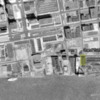A very interesting topic. I wish I had some personal layout photos to share, but I only have real world thoughts from the trains I've been on, or the places I've lived.
Take a ride on the NEC between Philly and NYC and you will see all kinds of settings for this type of track, especially between Philly and Trenton. The outside tracks there typically do not see passenger service and serve all kinds of industries, large and small and some that simply veer off on a sharp curve through a fence with gates into a dense grove of trees to locations unknown.
Another example from my college days is the Monon line that ran right through West Lafayette, Indiana. While maybe not a spur, it ran on the street through downtown well into the Amtrak era before trains were rerouted around town by CSX.
Here in the Phoenix area, we do not have truly "urban" track, but we do have lots of spurs that serve single level warehouse districts, cement plants, and some flour mills. One of the most interesting spurs is the single track two blocks west of the state capital that connects the former ATSF yard that terminates west of Phoenix running N-S to the former SP yard that is south of Phoenix and runs E-W. It has a pretty sharp curve as it is in the heart of the urban grid. This track served to transfer freight cars between the two roads and also was used by ATSF passenger trains #42 / #47 to Phoenix Union Station that is south of downtown until the train was discontinued in 1969. Even in 1950 that train was only 5 cars long with a baggage, coach, lounge, and two sleepers. By 1969 it was only a heavyweight baggage and a streamlined coach. Just an idea for a space limited layout that is based on a prototype.
I think what makes urban track really interesting is how bad it is. If there was ever an excuse for bad track work, this is it. With the slow speeds of operations and sharp turns there wasn't much need for great track work. The other interesting aspect for me in modeling is placing large structures next to urban sidings to give a real sense of scale to the trains. When we can make our O scale trains look small by comparison, that is interesting to me as they look bigger out on the open track.








